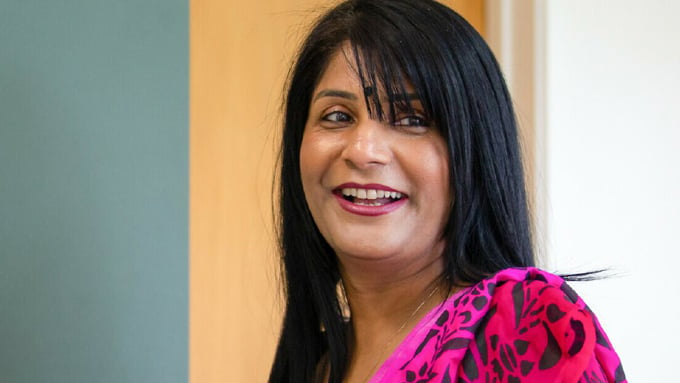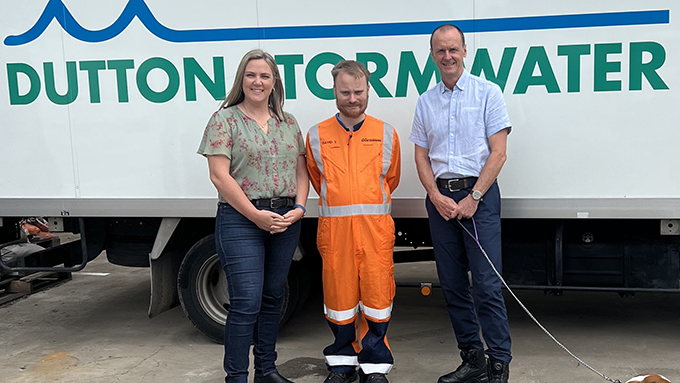New research reveals how women from the Indian migrant community experience barriers to career progress and how workplaces can help break down the blockades.
We’ve all heard of the “glass ceiling” – the term coined in the 1980s to describe the unseen blockades that impede women’s career advancement in middle management.
Now, thanks to research from Auckland University of Technology (AUT), we have new insight into how Indian migrant women (IMW) managers in New Zealand experience the glass ceiling. Perhaps most importantly, we can also understand the steps they have taken to break through these invisible yet indisputable barriers.
Savita Bhaskaran has just completed her Master of Business at Auckland University Technology of (AUT). An IMW who came to New Zealand 20 years ago, Bhaskaran currently works full-time as a professional staff member at AUT.
She says she undertook the thesis to “address a gap in knowledge about the experiences of a growing cohort of employees who contribute to the country’s economy”. Bhaskaran interviewed a dozen IMW with at least two years’ managerial experience in New Zealand organisations. Two-thirds reported frequently experiencing recruitment bias, racism, and bullying in the workplace.
For example, one participant participant said she “found it very challenging that the recruiters have horse blinkers on, and they don't see anything else apart from what they want to see.” Another voiced her frustration over her concerted efforts to progress in the workplace.
"I applied for two places, very senior roles, [that] I didn’t get; I applied for junior roles which I didn’t get because they said ‘You’d be very demotivated. We don’t want to give it to you because if we give you a junior role you are not going to be more motivated.’ So, it’s catch-22.”
Another described the bullying and harassment she experienced as “merely an extension of ethnic discrimination”. Feeling unsupported by the HR department, her only recourse was to deal with these incidents on her own, deeply impacting her mental and physical wellbeing. She reluctantly had to take a break from employment, which further degraded her professional and financial status.
“I am a 50-year-old Indian migrant woman, so the pecking order is so low for me today in my job and career. I have had to accept that [I must] ‘just run with what you get’ and continue one's life; how long can one complain and sound like a victim?”
Far from being victims, however, the women developed a range of strategies to overcome these barriers. Their strategies include taking proactive steps to understand and adapt to the local work culture and to the multicultural workplaces common in Aotearoa; building robust professional networks, being vocal about their career ambitions, actively seeking new opportunities for professional development and progression, and understanding the value of family support.
“It was a privilege to hear from these women, who have made huge changes in their lives as migrants. Most of them had to put in a tenfold effort, including requalifying to prove their credibility to their employer and to gain equal status and acknowledgement as New Zealnad Pākehā women. Now they are forging ahead in local organisations and ensuring their unique expertise and potential is realised,” Bhaskaran says.
The necessity for more inclusive workplaces for IMW, and other minority employees, is becoming clearer as the country’s ethnic diversity grows. By 2043, the Asian population in Aotearoa is projected to comprise 24 per cent of the population and become the second largest ethnic group.
“As Indian women, our culture, academic learning and experiences are of significant benefit to New Zealand organisations, and I hope this research will help raise awareness of the specific issues that can arise in the workplace and ways they can be addressed.”
How can New Zealand organisations dismantle the glass ceiling?
Recommendations from Savita’s thesis include:
- Fostering welcoming and inclusive workplaces – the women interviewed reported making deliberate efforts to ‘fit in’, sometimes at the expense of their own identity. “I can change everything, but I cannot change my colour,” said a participant.
- Organisations can improve cultural competence and understanding that differences are beneficial. This could include a focus on receiving feedback from minority and marginalised groups. A participant who is a senior manager in public service said, “The time to adapt may vary as everyone is different. It also depends on how supportive the organisation and senior leadership teams are, and the exposure given to employees.”
- Effective monitoring of reports by minority group women of bullying and harassment, as well as microaggressions, is crucial for organisations’ human resources departments. A participant who had been a victim of the severe repercussions of workplace bullying said nervously,” I am not the bees’ knees; I am not a pretty, white woman; you know what I mean? I am not blonde, I am not blue-eyed, so who is supposed to care for me?”
- Increased representation of IMW on senior leadership teams and ensuring the provision of appropriate training and career opportunities to facilitate engagement at this level. A participant stated, “I can’t remember in my current organisation if there is any head who is an Indian woman. I am definitely a loner in that sense. In fact, in my last organisation, I was the only diverse person of colour in my team. They were all uniformly European Kiwi.”
 Savita Bhaskaran works full-time as a professional staff member at AUT. Her thesis, Indian Migrant Women Managers’ Experiences of the Glass Ceiling in New Zealand, can be downloaded here
Savita Bhaskaran works full-time as a professional staff member at AUT. Her thesis, Indian Migrant Women Managers’ Experiences of the Glass Ceiling in New Zealand, can be downloaded here
Download the August 2024 digital edition of Taura magazine




